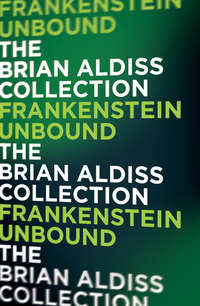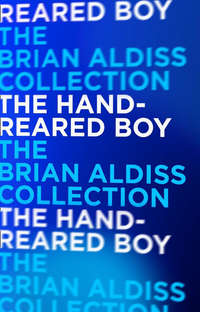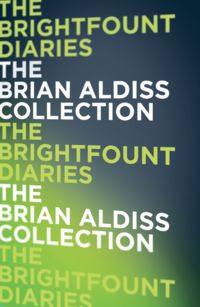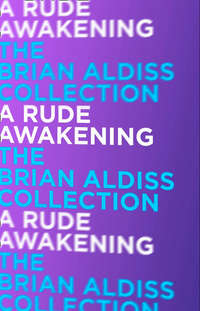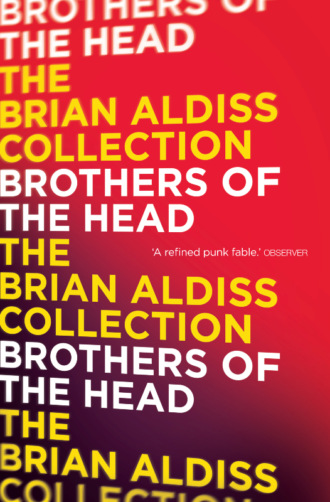
Полная версия
Brothers of the Head

BRIAN ALDISS
Brothers of the Head

for darling Wendy
first to hear of
‘The Bang-Bang’
rockin-anna-rollin
in the back of a Volvo
proceeding
like a bat out of Hell
from Hunstanton
‘Well, I was shocked …’
Contents
Title Page
Dedication
Introduction
Foreword by Roberta Howe
1 Henry Couling’s narrative
2 Laura Ashworth’s report
3 Excerpt from taped interview with Nickolas Sidney
4 Zak Bedderwick’s narrative
5 Continuation by Roberta Howe
6 Statement by Dr Alyson Collins
7 Conclusion by Roberta Howe
Appendix
Footnotes
About the Author
Copyright
About the Publisher
Introduction
My wife and I were driving home with our children. We had been staying in a bungalow on the north coast of Norfolk. Whilst there, she and I had had one of those matrimonial rows that blow up now and again.
Suddenly, a dream I had had during the previous night returned to mind. ‘A nightmare!’ I exclaimed. Immediately, of course, my family wished to hear about it.
So I told them.
I had dreamt the story of two boys who were conjoined at the hip and could not be separated. But worse still, another head was growing from the shoulder of one of the twins: a silent alien head.
My daughter Wendy was particularly distressed – eventually I would dedicate the story to her.
The dream lingered. I believed it to be prodromic – foretelling illness – but I built on it all the same. An exploitive music company took up the conjoined twins; transforming them into a novelty number they called ‘The Bang-Bang’. They performed with moderate success.
Looking up the reality of their deformity, I found there was a medical term for it: diprosopus tetrotus; a defect in human babies causing them to be born with two heads. Very sinister.
In Brothers, this extra head eventually speaks. After its years of imprisonment with the brothers, it has nothing good to say. It demands its freedom.
Yet it is a strangely poetic story, and the story of its publication is also. Brothers of the Head was the first book to be published by Pierrot Press. The Publisher there was new. He phoned me and asked me to meet him by a park bench in Red Lion Square. Was he a secret agent? An escaped prisoner? It was dusk when I went to meet him. He wanted me to write him a strange story.
The book was published early in 1977. It was originally accompanied by surreal sketches by Ian Pollock, which perfectly enhanced the story. Possibly five thousand copies were printed, two thousand of which were exported to America. The odd square shape of the book, the amazing illustrations, and my strange story helped the book to sell rapidly – so rapidly that the publisher (Philip – second name, alas, forgotten) flew out to New York to get his two thousand copies back.
They sold immediately, but nevertheless Philip went broke – such are the hazards of publishing.
Brian Aldiss
Oxford, 2012
Foreword by Roberta Howe
This volume is a memorial to the unhappy life of my brothers – their strange, unrealized, dual life. Although it ended in murder, and many people who like to pronounce on such things have said that my brothers’ entire existence was a form of slow murder, they did enjoy happier times. It is not an easy matter for any of us to weigh up the balance of joy and sadness in another life, even one as close as my brothers’ was to mine. Perhaps when we grow up we should not be so concerned with judging such things, but simply get on with the job.
When Tom and Barry were young lads, they did not realize that they were marked out from all other children. One thing was as strange to them as another, all was accepted without questioning. Father took us to live on L’Estrange Head when mother died, at which age I was only a tot of three and the boys mere babies. In the wild surroundings of the Head, we children were thoroughly at home. We all loved this beautiful spot in which I still remain. I’m thankful they returned to the Head in the end, before the last act of their tragedy was played out.
We could name all the plants growing on the Head, thanks to the teaching of our father. Down in the salt marshes, where the land is still regularly washed by the tides, grows a plant called the grass wrack. The wrack is often immersed in the sea for long periods. It can even flower under the water, and nature so provides for it that its pollen is water-borne. I often think of that humble plant in connection with my dead brothers. They also had their flowering, however submerged it might have been.
Nobody can deny that our family, the Howes, and the neighbours on the mainland, with few exceptions, looked on poor Tom and Barry as a stigma, a freak of nature. The boys, poor innocent mites, were never properly forgiven because mother – who was greatly liked by everyone – died in giving birth to them. At the height of the boys’ fame, when they were universally popular, the feelings against them changed to feelings of pride. But there was never any real concern for their terrible situation and, when the end came, back came the old disgrace. Ever since, I have known ostracism, useless to deny it.
Laura Ashworth, who played a positive part in the life of Tom and Barry, would perhaps say that the only shame lay in feeling shame, in these enlightened days. But it must be remembered that we live in a remote and backward part of the country, and that the Howes had their origins here. Little has changed on the coast of which L’Estrange Head forms part. Indeed, there has been recession rather than progress, for my Aunt Hetty has told me how Deepdale Staithe was a fine harbour in her young day, until the channel silted up. It would be impossible for a grain boat to navigate now.
Of course, with my brothers’ lives always beside me, as it were, I am still torn with emotion when I let myself dwell on it. I was unable to write their story myself, not only because of strong feelings but through my incapacity as an author; so I have put together what has been said by others concerned in the drama.
Going through the pages that result, I can only reflect that Tom could have become a happy man but for the last twist of ill fate. Most of his life was still before him. As for Barry – there was so much more to him than the anger and violence on which many people have dwelt. Barry hated his fate even more than Tom; yet hatred was not the only feature of his nature, by any means.
As for ‘the other’ … I’m long over my horror now, and think of it as one more grain ship that never sailed. ‘The other’s’ channel to the sea was silted up even before it came into being. Pity seems to be more appropriate than fear or shame.
Here I wish to thank all who contributed to the narrative, with particular thanks to Laura Ashworth for her counsel and to Mr Henry Couling for financial aid. I thank Paul Day for permission to publish excerpts from his songs.
I also have to thank John James Loomis of the Canadian Broadcasting Authority for permission to include part of a taped interview made in connection with his TV biography, Bang-Bang You’re Deadly.
Конец ознакомительного фрагмента.
Текст предоставлен ООО «ЛитРес».
Прочитайте эту книгу целиком, купив полную легальную версию на ЛитРес.
Безопасно оплатить книгу можно банковской картой Visa, MasterCard, Maestro, со счета мобильного телефона, с платежного терминала, в салоне МТС или Связной, через PayPal, WebMoney, Яндекс.Деньги, QIWI Кошелек, бонусными картами или другим удобным Вам способом.






